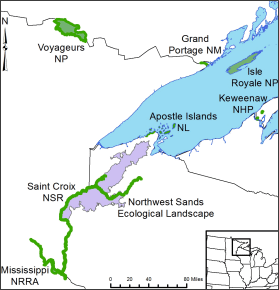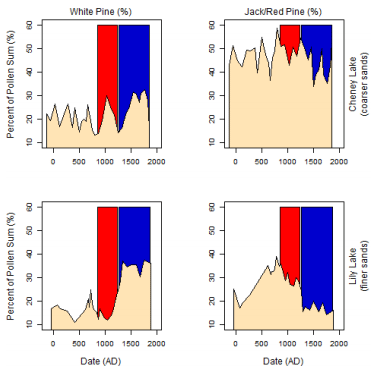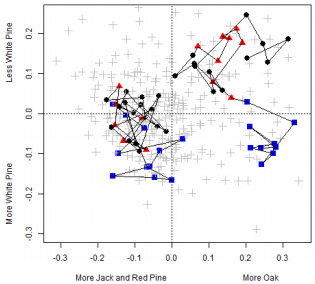
A paper (Tweiten et al. 2015) shows that soils and local climate can strongly influence how forests respond to climate change. This page briefly summarizes the findings, which are part of ongoing work of the National Park Service Climate Change Response Program and collaborators to support park adaptation to changing conditions. Consult the full project brief [PDF] for more in-depth information.
Results
Local factors – specifically soils and local climate – strongly influenced forest response to past climate change, and these influences were clearly evident despite the fact that study sites all occur within a small area on a relatively homogeneous glacial outwash landscape. Sites with finer-textured soils and higher water-holding capacity experienced greater long-term (century-to-century) forest community change, whereas forests on sites with poorer soils (coarser texture and lower water- and nutrient-holding capacity) changed much less overall and were more consistently dominated by a single forest type (see Figures 2 & 3).

Implications - Adapting to Change
This study of historical change shows that soil attributes and local climate shape forest response to climate changes and disturbance at very local scales, even within a sandy glacial outwash plain with limited soil variation. The prominence of these relationships on a relatively geologically homogenous landscape suggests that this understanding may be relevant to resource management on a broad range of landscapes.

More Information
This project is part of ongoing work of the National Park Service Climate Change Response Program and collaborators to support park adaptation to changing conditions. You can download the full publication: Tweiten, M.A., Calcote, R.R., Lynch, E.A., Hotchkiss, S.C., and Schuurman, G.W. 2015. Geophysical features influence the climate change sensitivity of northern Wisconsin pine and oak forests. Ecological Applications 25:1984-1996.
Last updated: February 5, 2024
